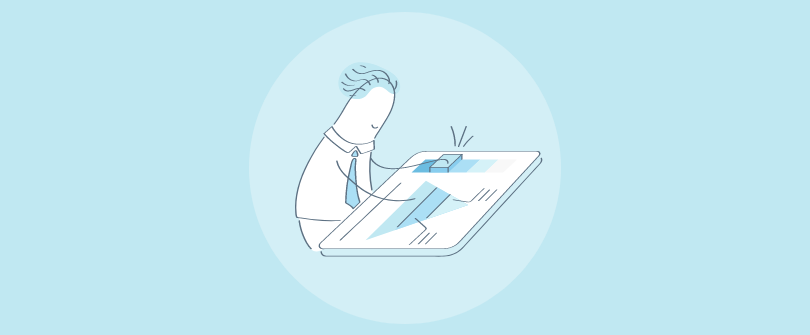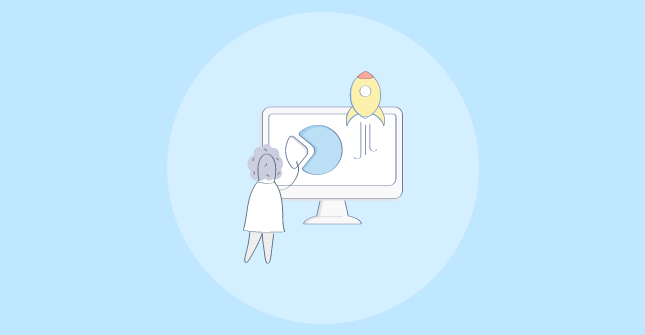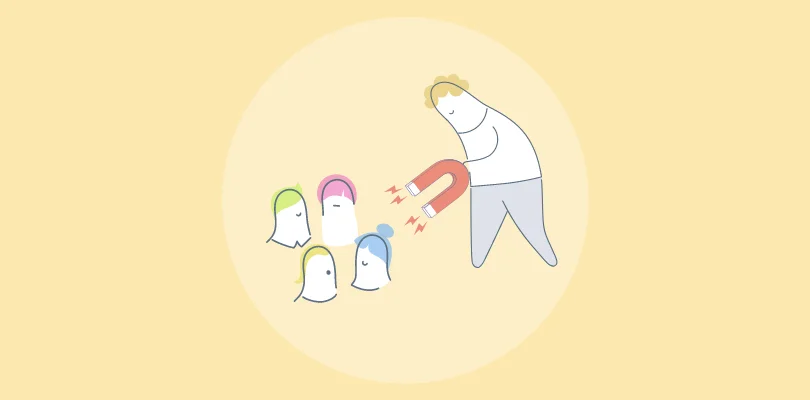
Imagine you’re filling a water tank with water and notice a pesky hole on the side of the tank.
Would you keep filling more water or stop the leaking water from the hole first?
It’s the same with customers.
Focusing on bringing in new customers and not stopping the existing ones from leaving will lead to wasted resources, and your metaphorical water tank will never fill up.
Just the way you’d cover the hole to retain the water, you can employ some amazing customer retention strategies to make your customers stick.
And that’s what we’ll cover in this article. So, without further ado, let’s begin.
Customer retention refers to the ability of a company to maintain a healthy flow of repeat business/purchases and retain its loyal customers.
A high customer retention rate signifies that a company can make its customers happy with its products/services, motivating them to continue with the company and not churn away to the competitors.
Not only do your loyal customers help you get more sales and revenue, but they also give you more leverage to grow your business via word-of-mouth marketing. It’s also a great predictor of customer loyalty and trust for a longer time.
How to Calculate Your Customer Retention Rate?
It’s always a good idea to track your customer retention rate and implement the best strategies to make your customers happy.
Here’s what the formula for measuring the customer retention rate looks like:

Let’s understand this better with an example:
Suppose you begin your quarter with 2000 customers. You first lose 400 but then gain 600 customers.So, track the elements mentioned below to measure the customer retention rate:
No. of customers at the end (which in our case are)= 2000 – 400 + 600 = 2200
No. of new customers (which in our case are) = 600
No. of customers at the beginning (which in our case are) = 2000
So, your CRR would be:
2200 – 600/2000 X 100 = 1800/200 X 100 = 90% CRR
12 Best Customer Retention Strategies to Get Happy Customers
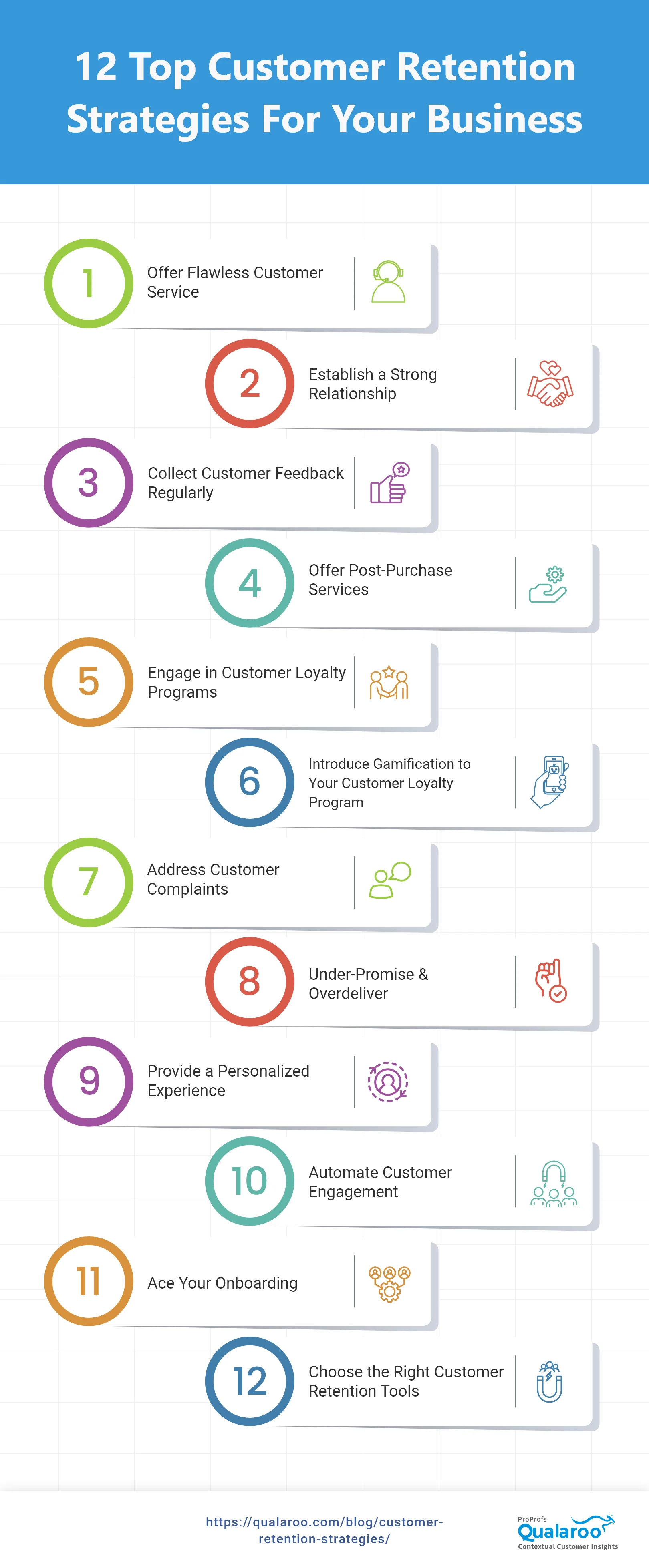
Now that you know how to calculate the retention rate, let’s look at the top-notch strategies for customer retention you can employ to improve the rate and make your customers happy.
1. Offer Flawless Customer Service
If you want to keep your customers happy and loyal, you must ensure that you provide them with great customer service. When customers reach out to you, they want to be heard and expect you to address their concerns.
Timely resolving their issues can go a long way in cementing a positive brand perception, promoting loyalty, and increasing the average purchase value.
According to a study published in Harvard Business Review, the group surveyed customers who had reached out to brands via Twitter to post their complaints, questions, and comments.
Here are the results of the survey:
- The people who received any response to their tweet were willing to spend more on the brand in the future.
- Brands that responded to customers’ tweets scored 37 points higher than others on the NPS (Net Promoter Score) survey.
Although the study considers only the Twitter interactions between brands and customers, you can easily extrapolate the services to any service channel. It clearly shows that prompt service can generate goodwill among customers.
Here are some ways to use support services as a customer retention strategy:
- One of the simplest ways to offer 24×7 support is through live chat tools like ProProfs Chat. It lets your customers speak to support representatives in real time without needing to email or wait on the phone. The chatbot is also a great feature to improve your First Response Time (FTR).
- Another indispensable tool is a robust ticketing system like ProProfs Helpdesk. You can add a simple ticket form on your website or app.
- Install self-service options like an integrated knowledge base and help center. You can also consider creating a video help center.
KPIs (Key Performance Indicators) are also helpful in improving customer service. By closely examining your key performance indicators, you can determine what makes your customers happy or upset.
Internal KPIs can gauge the efficiency of your support staff. Some of them are:
- The volume of service requests handled by the channel
- Total repeat tickets per customer
- Average response times
- Customer Effort Score (CES)
- Customer satisfaction score(CSAT)
In the next section, we’ll discuss these KPIs in more detail, so stick to the end.
CASE STUDY: BELRON uses NPS to recognize early red flags and improve its experience.
Belron is a company offering windshield replacement services. The company leverages Qualaroo to maintain its NPS of 80.
According to Stephen Payne, the Customer Journey Team Manager, NPS alone cannot offer deep insights into the customer experience, and that’s where conducting contextual surveys come in handy.
A simple NPS question with a follow-up question can provide rich and actionable insights.
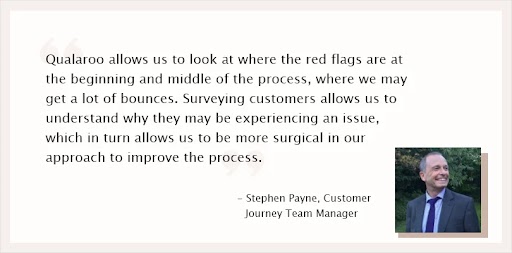
2. Establish a Strong Relationship
A strong relationship with your customers will make them want to stick with you. But, most people focus on getting new customers and how to convert them.
But the thing is, if you don’t have strong customer acquisition and retention strategies, you’re likely to lose existing customers, even if you’re getting new ones.
You must genuinely care about their experience with your brand to build a strong relationship with your customers. You must be willing to go above and beyond and give whatever they require to be happy with your products/services.
It all starts when they enter your sales funnel as a prospect. Explore how to communicate with your customers regularly, not just when you want something from them.
A robust CRM tool like BIGContacts can be incredibly helpful for building long-lasting customer relationships.
The right CRM tool provides a one-stop platform for tracking and managing your customers to avoid miscommunication and ensure an effortless experience at every point of their journey.
Here’s how:
- It lets you stay on top of your business, strengthen customer loyalty, and streamline sales.
- You can group customers and prospects into different segments to understand each cohort’s preferences, needs, and problems.
- Then, use targeted marketing strategies to engage with different customer segments at different points in your sales funnel.
For example:
- To increase the repurchase probability, you can segment high-value customers to offer personalized deals and discounts based on their purchase history.
- You can target new customers with free first-time SaaS product setup services or training sessions.
These services foster a healthy relationship between the business and the customer and greatly promote customer retention.
3. Collect Customer Feedback Regularly
Customer feedback is an asset to stay ahead of the game and ensure you deliver the best product to your customers. Among different methods of gathering feedback, surveys are your best bet to create a continuous feedback loop.
They are easy to implement, cost-effective, and provide rich insights into customer behavior and actions.
Some of the proven and most effective surveys include:
- NPS
- CSAT (Customer Satisfaction)
- CES (Customer Effort Score survey)
- UES (User Effort Score survey)
- Exit-intent survey
- Market research
- Product feedback
Surveys can help collect more than just customer feedback. They make you aware of what customers say about you and your services.
That’s why it’s important to prepare a survey and add depth to it using branching logic and follow-up questions to understand the WHY.
But it doesn’t end here.
You need to analyze and act quickly to close the loop. Advanced survey tools like Qualaroo let you design surveys, collect feedback, and analyze it in one place.
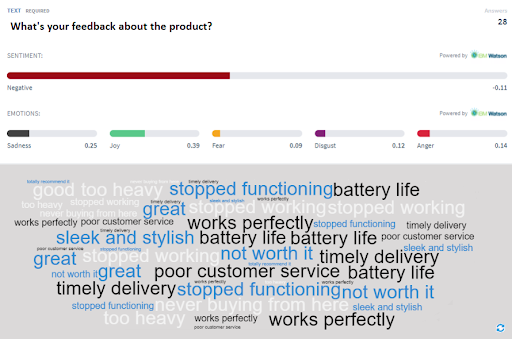
With AI sentiment analysis and NPS score tracking, you can uncover insights in real-time to make informed decisions.
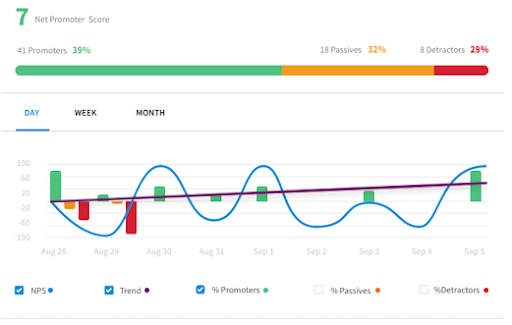
4. Offer Post-Purchase Services
Acquiring customers is only half the battle. You need to extend the services post-purchase to make them feel like they’re getting more value from their investment.
Here are a few examples of customer retention strategies to understand how you can make it happen:
- You could offer them free consultation by an expert or periodic quality checks. You can also provide product or service upgrades or help them with questions about what they just bought.
- After your customers buy your product or service, you also need to set up systems that enable you to follow up with them and keep the relationship going.
- To ensure no client emails are missed, filter and organize all emails in one place.

- In the same way, hassle-free returns and exchanges are essential aspects of an effortless post-purchase experience.
- If your customers are unhappy with the product and want to return it, they should be able to get a refund or exchange without jumping through hoops.
- New visitors or customers are more hesitant to purchase from a new brand because they have no experience with your return or exchange process. One way to combat such reservations is to clearly state the return & exchange policies on your website or the product page.
One good example of customer retention strategies is how Amazon clearly states its return policy under the product feature list which makes the customer experience smooth for buyers.
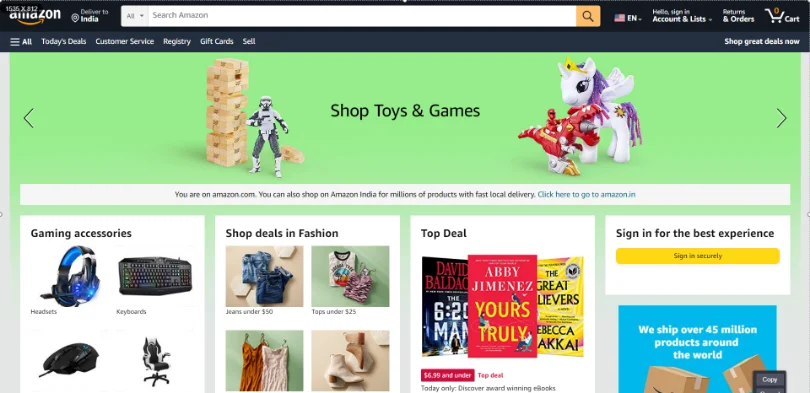
Old brand or new, it’s also important to make sure it’s super easy to get in touch with your returns department.
The more friction you put into buying and returning products, the fewer people will purchase.
So, mentioning a return and refund policy on the website or product page can help retain your customers and save you from chargebacks.
5. Engage in Customer Loyalty Programs
Implementing a customer loyalty program is another great customer retention strategy to keep them coming back to you.
A loyalty program is an initiative that rewards repeat customers with redeemable points on subsequent purchases. The reward encourages them to continue buying from you and refer you to others to earn more points.
For example, if you have a restaurant, you can give loyalty points every time they buy certain meals or drinks — just like Starbucks.
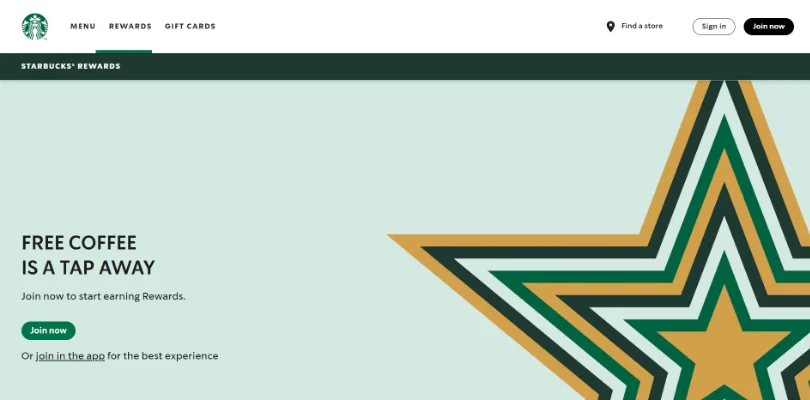
You could also offer special discounts to repeat customers or provide special perks to VIP customers. Many companies offer special discounts on customers’ birthdays or anniversaries, which is also a way to gather interesting data about your customers.
The key is to give your customers something they want. As a customer, earning rewards for using a certain product or service is a great way to feel more connected to a brand.
6. Introduce Gamification to Your Customer Loyalty Program
Over the years, loyalty programs have moved from simply rewarding purchases with points or coupons to offering more interesting features.
Gamification applies game features in rewarding customers, typically to promote customer engagement with a product or service.
Some examples are the prize wheel, quizzes, exclusive club memberships, and so on.
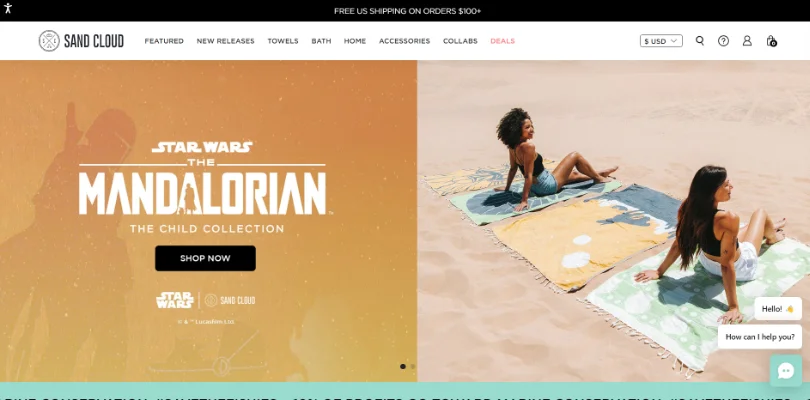
Gamifying your loyalty program incentivizes consumers to purchase more frequently, buy more, or earn points.
Another advantage of gamified quizzes is that they let you collect demographic and behavioral data about your customers.
You can design a scored personality test and reward the customers with personalized results sent to their email addresses. With a simple quiz, you can collect insights about your audience and capture their email address for retargeting campaigns.
Not only this, you can also use the data from quizzes meant for product recommendations to provide better purchase options that customers find relevant every time.

And who doesn’t enjoy getting the right options when planning to buy something?
Throw in a small discount code, and you’ve also enticed the respondents to make a purchase.
7. Address Customer Complaints
It’s important to invest in customer happiness as it helps you to measure customer loyalty, reduce customer churn and increase your revenue.
If a customer has complained about a flaw in your product or service, there’s a good chance they’ll tell other people about it. So, it’s paramount to address customer complaints as quickly as possible.
Also read: Churn Rate: What Is It and Different Ways to Calculate It
But it’s also important to do it in a way that doesn’t make it seem like you’re just trying to get them to go away.
Complaints can come from all channels, like emails, tickets, phone calls, and social media pages.
So, you need an omnichannel approach to address the complaints and fix the problem.
- Set up a dedicated helpdesk system to centralize the tickets.
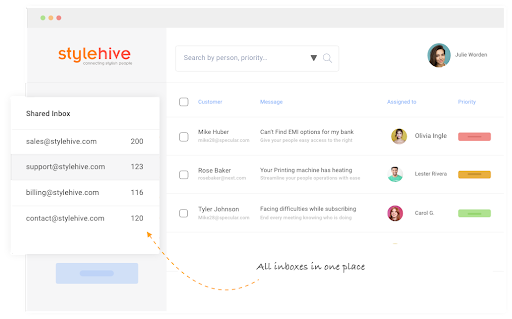
- Integrate live chat with the helpdesk to automate ticket creation after the chat ends.
- Use tools like Hootsuite to monitor the comments, complaints, and brand mentions on social channels.
Here’s how Hootsuite leveraged Qualaroo surveys to improve their landing page.
Another way to improve their experience with your brand is to act on their concerns and comments proactively. Keep your customers informed about the ticket’s status and use surveys to gauge their satisfaction once you resolve the complaint.
Try to respond to the complaints, fix the problem, and show the customer how much you care about their experience.
What’s more, be empathetic, offer reasonable solutions to problems, and always act in the best interest of your customers. Address the complaint immediately and be open and honest about what happened.
If you don’t address it, it will come back again and again. With more people likely to research your business online before they purchase from you, you must have a good reputation on the internet.
8. Under-Promise & Overdeliver
Companies often over-promise by falling prey to enthusiasm, which leads to undelivered expectations. And we all know what happens when customer expectations aren’t met; they churn away.
So, since you need to deliver an exceptional experience and exceed customer expectations, it’s smart to under-promise so you can offer more than that.
9. Provide a Personalized Experience
There are significant positive effects of experience personalization, as shown in the image below:

As we can see, 60% of people would likely become repeat buyers after personalized experiences. So, it must be a key part of your customer retention strategies.
It means you’ll need to ask customers what they want, listen to their feedback, and use that feedback to tailor their experience.
It’s also important to work out your customer’s journey, where they drop off, and what you can do to improve that experience. One way to do that is by using data.
Here are some ways to do it:
- Map your customers’ purchase journey to track where they drop off and what you can do to improve that experience. You can use behavioral tools like heatmaps and session recordings.
- Use surveys to collect customer feedback and map their preferences. You can then use the data to show personalized product recommendations.
- Send personalized notifications to entice customers to make a purchase.
Bonus read: 20+ Best Customer Journey Mapping Software to Grow Your Business in 2022
Using customer data and behavior insights, you can design the ultimate personalized experience for each customer according to their tastes and preferences.
Examples of personalization include sending personalized emails, deals, recommendations based on individual preference, etc.
Here are some other examples of personalized experiences:
- Spotify’s playlist customization
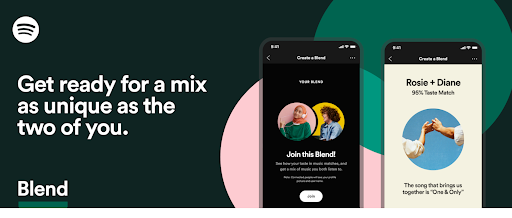
- Amazon’s product recommendations
10. Automate Customer Engagement
It may be time to automate if you find yourself overwhelmed with repetitive tasks.
Marketing and experience automation helps target your customers without spending too much time on the mundane.
It’s a great option to:
- market your start-up,
- monitor your customers,
- And keep them in the loop without much manual work.
It makes brand remembrance easy in the customer’s mind. It allows you to track and communicate with your customers without dedicating too much time to one-off communications.
Here’s how automation works to improve customer retention and engagement:
- Automated chatbots can auto-initiate live chats based on visitors’ actions and behavior. They can automatically redirect the chat to an agent, schedule meetings, and create tickets.
- A comprehensive CRM like BIGContacts is another way to automate tasks and client interactions. You can set up workflows, segment clients, assign tasks to teams, set up reminders, and more to automate the sales process.
- Use automated drip mail campaigns to automatically warm up leads and retarget customers to increase sales.
- Use a product recommendation engine to show automated suggestions based on customers’ browsing and purchase history.
11. Ace Your Onboarding
Without an elaborate onboarding process, you may leave your customers wanting guidance. And it’s one of the major UX mistakes companies make that ripples down to an increased churn rate.
To avoid this, you need to make onboarding a part of your customer success strategy. Help your new customers get familiar with your offerings, how to use your product, and get the most out of it.
For example, your new customers may be able to figure out the simple and obvious features, but it’s best to guide them through the complex ones. It allows them to see the value in your offerings, encouraging them to purchase again.
😀FUN INSIGHT!
Qualaroo has an elaborate and guided onboarding process leveraging expertise from the customer support and product-expert teams. It aims to equip the users to optimize the use of feedback and analytics features.
12. Choose the Right Customer Retention Tools
Getting the right tech stack is paramount for your retention efforts to bear fruit. From collecting valuable customer insights to email campaign automation, you need reliable customer retention tools to fall back on.
For example, you can use Zendesk for help desk functionality, MailChimp for email automation, and Heap.io for customer behavior analysis.
To choose the right stack for your business, you can refer to our detailed list of the top 10 customer retention tools, including their features, pros, cons, etc.
Customer Retention KPIs: How to Measure Them?
Now that you know the best customer retention strategies, you should also know the metrics to track while leveraging those strategies. So, here are the crucial customer satisfaction metrics.
Net Promoter Score (NPS)
Net Promoter Score (NPS) is one of the most important success metrics for customer service teams across all industries.
NPS is derived using a method for measuring customer loyalty through a set of questions after a purchase or service interaction. The responses are noted on a numbered scale (0-10) or free text.
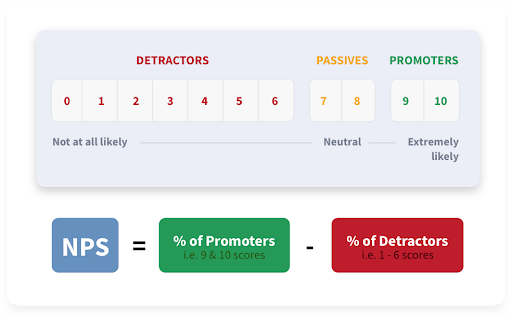
Here’s the primary NPS question:
- How likely are you to recommend our product/service to your friend/family?
To collect more in-depth data, you can use branching to add follow-up questions based on respondents’ answers.
Customer Satisfaction Score (CSAT)
CSAT helps measure transactional customer experience to gauge how satisfied or happy customers are after an interaction or a purchase.
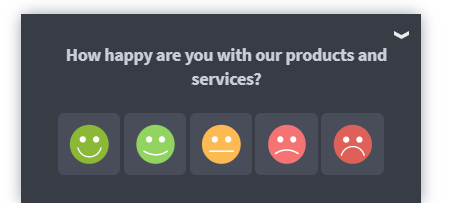
Bonus read: Creating a Customer Satisfaction Survey: Best Practices and More
Customer Effort Score (CES)
CES measures how easy it is for the customer to get their queries and issues resolved. It’s an indicator of brand loyalty and repurchase probability.
The easier it is for the users to reach their goals with your business, the more likely they will stick with you.
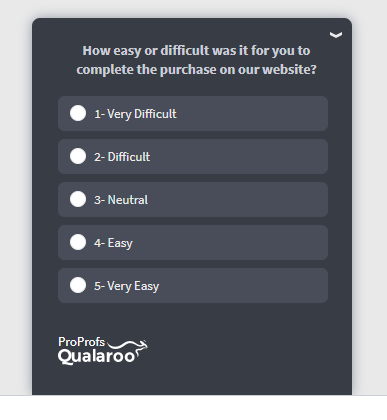
Customer Churn Rate
Customer churn rate is a metric that tracks the percentage of customers who stop shopping from you. Basically, it’s the percentage of people who stopped being your customers.
You need to track this metric because it allows you to see if your business strategies are working and, if not, what you can do to make the customers stay.
Here’s the formula you can use to measure customer churn rate:
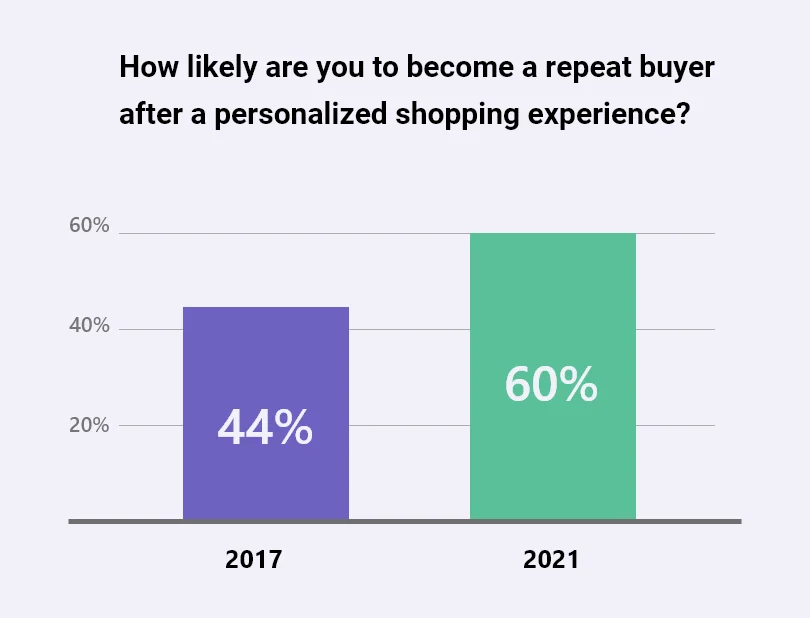
Customer Lifetime Value
There’s an old saying –
“If you can’t measure it, you can’t manage it.”
Keeping an eye on your CLV graph can take your customer retention game to the next level.
Customer Lifetime Value (CLV) is the total profit from that customer over the entire period they are in business with you.
It helps to determine if your current customers are spending more than they initially did and if you have long-lasting relationships with them.
You can then reevaluate your marketing and experience optimization strategies to increase the average lifetime value. It would help improve retention rates, conversions, and customer loyalty, among other things.
Related Read: 25 Best Customer Experience Management Software & Tools
Existing Customer Growth Rate
The existing customer growth rate refers to the growth in revenue from the existing customers. Since it’s believed that retaining customers is cheaper than acquiring new ones, it’s best to track the growth in the revenue generated from the current customers.
If you don’t see any growth in the percentage of the revenue, you need to rethink your customer retention strategies to boost the revenue generated from the existing customers.
This metric does not take the revenue generated from new customers into account. It gives you both a bigger-picture view and insights into individual customers.
The formula to measure existing customer revenue growth rate is:
Repeat Purchase Ratio (RPR)
As the name suggests, the repeat purchase ratio refers to the rate at which customers come for more purchases. It’s a great metric to track customer loyalty, much like NPS, and also the effectiveness of your customer retention efforts.
The metric also helps set benchmarks for repeat purchases for certain demographics, products, markets, and buyer personas.
Here’s how you can calculate it:
Time Between Purchases
This metric focuses on the time taken by customers between purchases. It helps you evaluate customer satisfaction and if they are looking for competitors.
The longer the time, the longer it takes your customers to make the purchase decision, signifying that customers are not convinced of your products’ value right off the bat.
You can track this metric along with CSAT and NPS to better understand the situation and plan your customer retention strategies accordingly.
Here’s how to calculate the time between purchases:
Loyal Customer Rate
The loyal customer rate metric measures how many customers repeat purchases with your company. Essentially, it tracks the number of customers to repeat business over a specific period.
The more customers buy from you on repeat signifies how satisfied they are with your offerings & services and are loyal to your brand. You can calculate the rate with this formula:
Focus on Retention; New Customers Will Follow
Customer retention is as important, if not more, as trying to gain new customers. There’s no point in spending resources to acquire new customers if you can’t retain them in the longer run.
So, here’s a sum up of everything you need to consider as a part of your best customer retention strategies:
- Frequently engage and interact with customers to understand how they think, what they like, and how you can improve your products and services to suit their needs better.
- Use surveys and feedback from tools like the helpdesk and chatbot to identify where you lack so you can improve on those fronts.
- And lastly, don’t forget to track the crucial customer retention metrics like CSAT, NPS, and more to have a holistic and detailed view of your customer experience.
Once you ace your customer experience, your loyal customers will spread good word-of-mouth to attract more prospective customers.
Frequently Asked Questions
Why Does Customer Retention Matter to Your Business?
Poo customer loyalty can mean losing 23% to 30% of your customers. Plus, loyal customers spend around 30% more than new customers, increasing your average order value. Having a higher retention rate means more profits and greater lifetime customer value as well.
What Are the Strategies Used for Customer Retention?
If you want to stop customers from churning away, follow these simple customer retention strategies:
- Provide excellent customer service
- Collect customer feedback
- Regularly communicate with customers
- Personalize the customer experience
- Reward loyalty
- Automate customer engagement
- Leverage customer loyalty programs
- Design an elaborate onboarding process
What Are the 4 Key Metrics of Customer Satisfaction?
You need to track these 4 key customer satisfaction metrics to stay on top of customer trends, preferences, and changing behaviors:
- Net Promoter Score (NPS) to measure how likely a customer is to recommend your business to others.
- Customer Effort Score (CES) to measure the effort required for a customer to have their issue resolved or their need met.
- Customer Satisfaction Score (CSAT) to track a customer’s overall satisfaction with a product or service.
- Customer Retention Rate (CRR) to track the percentage of customers who continue to do business with a company over a given period of time.
If you want to read about customer satisfaction metrics in detail, you can refer to this detailed blog.
FREE. All Features. FOREVER!
Try our Forever FREE account with all premium features!


